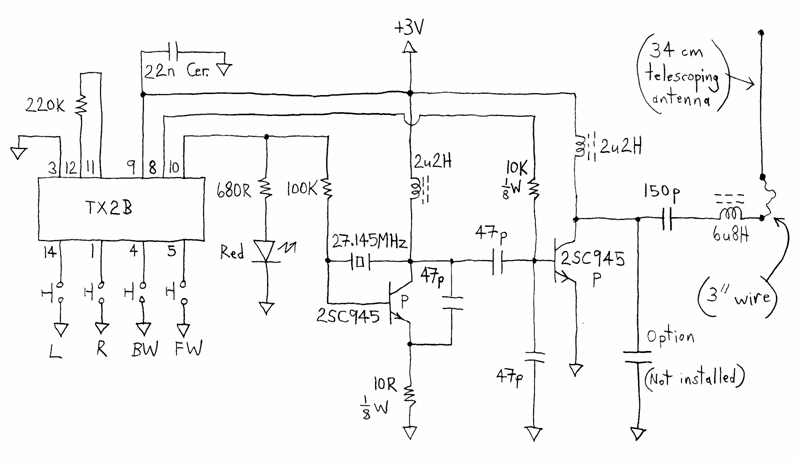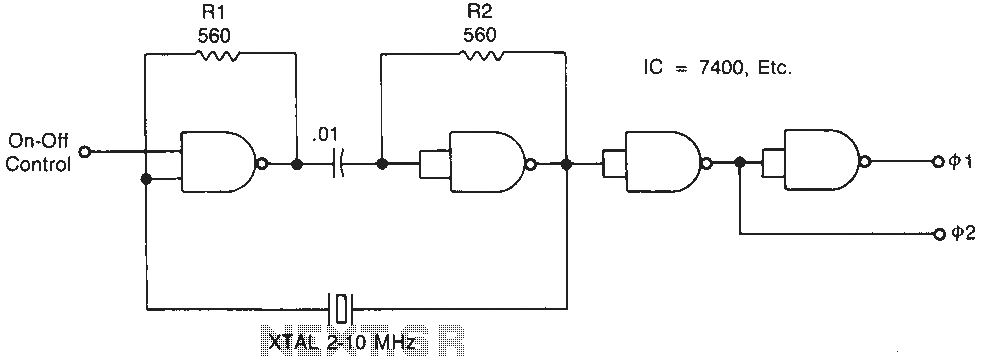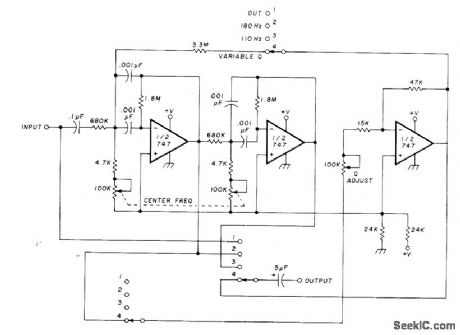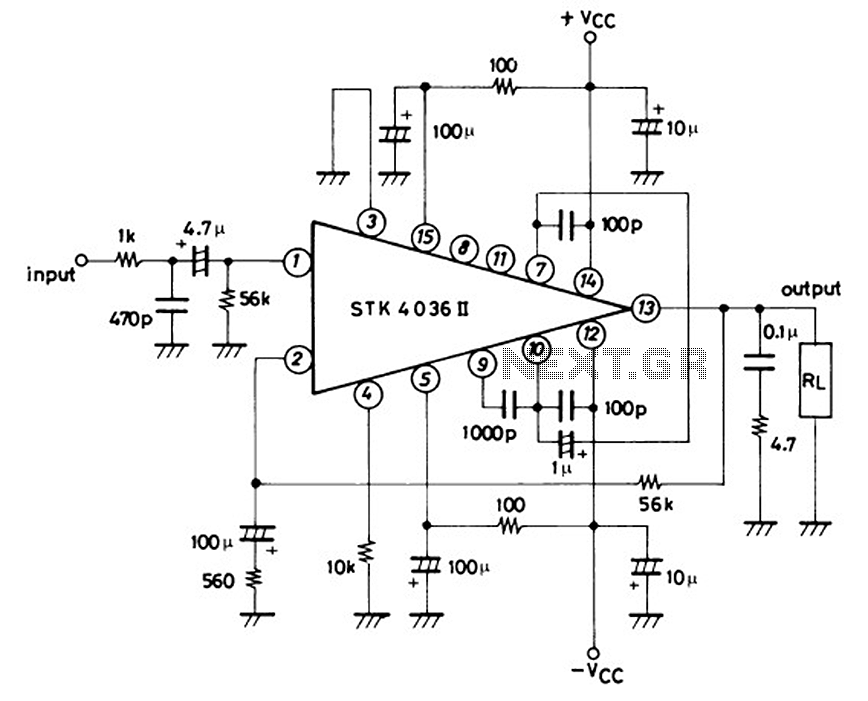
Thermistor circuit basic application
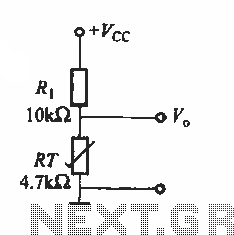
The basic application circuit for thermistors is illustrated. Figure (a) depicts a fundamental temperature measurement circuit. The accuracy of this temperature measurement is not high and is suitable only for applications with lower precision requirements. RT represents a positive temperature coefficient thermistor; as the temperature increases, the output voltage (vo) also increases, and conversely, it decreases when the temperature drops. In contrast, an RT negative temperature coefficient thermistor exhibits a decrease in output voltage as temperature rises and an increase as temperature falls. Figure (b) shows a circuit utilizing a thermistor in conjunction with a differential operational amplifier, which enhances measurement accuracy. This circuit can detect the temperature difference between two points. When RTi is lower than RT2 (RTi < RT2), the potential at the non-inverting input of the operational amplifier (a) is higher than at the inverting input, resulting in a low output; conversely, when the temperature at RTi is higher than at RT2, the output is high. Figure (c) illustrates a temperature measurement circuit using an operational amplifier and a logarithmic diode, where the logarithmic diode compensates for the linearity of the thermistor. The adjustable resistor RP modifies the gain of the amplifier, further improving output characteristics.
The basic thermistor application circuit serves as a foundation for temperature measurement systems, particularly in environments where high precision is not critical. The positive temperature coefficient thermistor (RT) operates by exhibiting an increase in resistance with rising temperature, thus leading to a corresponding increase in output voltage (vo). This characteristic is beneficial for simple applications where a direct correlation between temperature and voltage is sufficient.
In contrast, negative temperature coefficient thermistors demonstrate a decrease in resistance with an increase in temperature, resulting in a lower output voltage. This behavior can be utilized in various applications where a drop in voltage indicates an increase in temperature, allowing for straightforward temperature monitoring.
The introduction of a differential operational amplifier circuit, as shown in Figure (b), enhances the accuracy of temperature measurements by comparing two thermistor readings. The operational amplifier configuration allows for the detection of minute temperature variations between RTi and RT2. This operational amplifier's ability to amplify the difference in voltage between its inputs makes it an effective tool for precise temperature differential measurements, which can be critical in applications such as climate control systems, industrial processes, and scientific research.
Furthermore, the use of a logarithmic diode in conjunction with an operational amplifier, as depicted in Figure (c), provides a more sophisticated approach to temperature measurement. The logarithmic diode compensates for the non-linear characteristics of the thermistor, ensuring that the output remains linear across a range of temperatures. The adjustable gain provided by the resistor RP allows for fine-tuning of the amplifier's response, enabling the circuit to adapt to varying measurement conditions and enhancing the overall performance of the temperature measurement system.
Overall, these configurations illustrate the versatility of thermistors in temperature measurement applications and the potential for improved accuracy and functionality through the integration of operational amplifiers and other components.As shown for the basic application circuit thermistor. Figure (a) of the basic temperature measurement circuit. The circuit temperature measurement accuracy is not high, can only be used for less demanding precision applications. RT is a positive temperature coefficient thermistor, the temperature rises, the output voltage vo is increased, decreased and vice versa; RT negative temperature coefficient thermistor, the temperature rises, the output voltage vo is lowered, increased and vice versa. Figure (b) is measured using a thermistor temperature differential operational amplifier circuit, temperature measurement accuracy improved.
This circuit can detect a temperature difference between two points, which when RTi RT2 at a temperature lower than that RTi <RT2, operational amplifier (a) end potential is higher than (+) side potential, the output is low; Similarly, the month in which the temperature is higher than L RT2 when the temperature at the output is high. FIG Il (c) is the use of an operational amplifier and logarithmic diode temperature measurement circuit, logarithmic diode thermistor linear compensate, RP adjustable gain of the amplifier, thereby further improving the output characteristics.
The basic thermistor application circuit serves as a foundation for temperature measurement systems, particularly in environments where high precision is not critical. The positive temperature coefficient thermistor (RT) operates by exhibiting an increase in resistance with rising temperature, thus leading to a corresponding increase in output voltage (vo). This characteristic is beneficial for simple applications where a direct correlation between temperature and voltage is sufficient.
In contrast, negative temperature coefficient thermistors demonstrate a decrease in resistance with an increase in temperature, resulting in a lower output voltage. This behavior can be utilized in various applications where a drop in voltage indicates an increase in temperature, allowing for straightforward temperature monitoring.
The introduction of a differential operational amplifier circuit, as shown in Figure (b), enhances the accuracy of temperature measurements by comparing two thermistor readings. The operational amplifier configuration allows for the detection of minute temperature variations between RTi and RT2. This operational amplifier's ability to amplify the difference in voltage between its inputs makes it an effective tool for precise temperature differential measurements, which can be critical in applications such as climate control systems, industrial processes, and scientific research.
Furthermore, the use of a logarithmic diode in conjunction with an operational amplifier, as depicted in Figure (c), provides a more sophisticated approach to temperature measurement. The logarithmic diode compensates for the non-linear characteristics of the thermistor, ensuring that the output remains linear across a range of temperatures. The adjustable gain provided by the resistor RP allows for fine-tuning of the amplifier's response, enabling the circuit to adapt to varying measurement conditions and enhancing the overall performance of the temperature measurement system.
Overall, these configurations illustrate the versatility of thermistors in temperature measurement applications and the potential for improved accuracy and functionality through the integration of operational amplifiers and other components.As shown for the basic application circuit thermistor. Figure (a) of the basic temperature measurement circuit. The circuit temperature measurement accuracy is not high, can only be used for less demanding precision applications. RT is a positive temperature coefficient thermistor, the temperature rises, the output voltage vo is increased, decreased and vice versa; RT negative temperature coefficient thermistor, the temperature rises, the output voltage vo is lowered, increased and vice versa. Figure (b) is measured using a thermistor temperature differential operational amplifier circuit, temperature measurement accuracy improved.
This circuit can detect a temperature difference between two points, which when RTi RT2 at a temperature lower than that RTi <RT2, operational amplifier (a) end potential is higher than (+) side potential, the output is low; Similarly, the month in which the temperature is higher than L RT2 when the temperature at the output is high. FIG Il (c) is the use of an operational amplifier and logarithmic diode temperature measurement circuit, logarithmic diode thermistor linear compensate, RP adjustable gain of the amplifier, thereby further improving the output characteristics.
